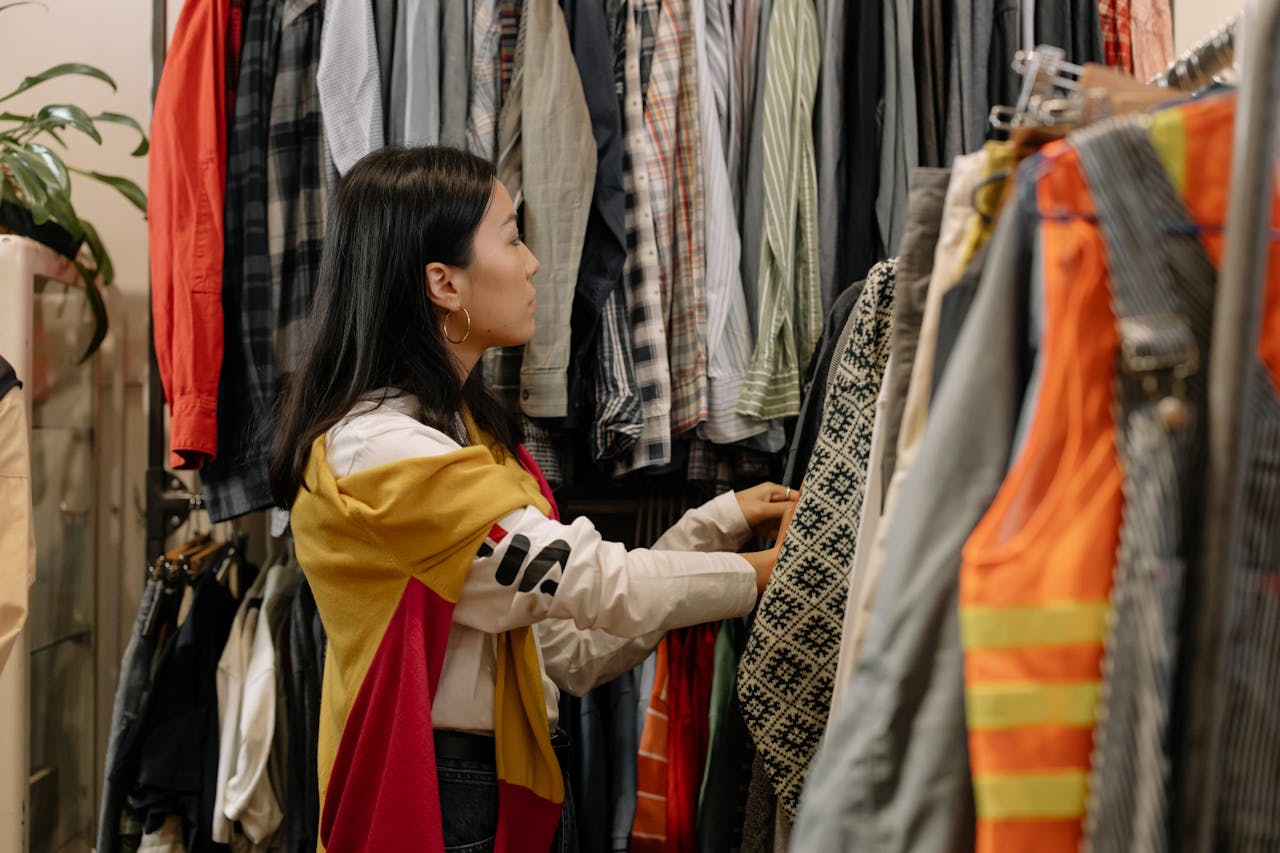Write Us: hello@ali5.org
The Rise of Sustainable Fashion: How to Shop Responsibly
Fast fashion is harming the planet, but you don’t have to stop shopping to make a difference. This guide breaks down how to embrace sustainable fashion and shop more responsibly in 2025.

Here’s the uncomfortable truth behind those bargain buys: fast fashion isn’t as cheap as it seems. Sure, that cute top costs less than your latte, but the real price is paid by exhausted workers stitching clothes for pennies, landfills overflowing with discarded trends, and rivers dyed toxic from factory runoff. That “deal” suddenly feels a lot heavier, doesn’t it?
Fashion may look glamorous on the outside, but behind the scenes, it’s one of the dirtiest industries on the planet. Now, people are waking up. They’re asking: Who made my clothes? What’s it made from? Do I need 10 new outfits every month?
That shift in awareness is fueling something powerful: the rise of sustainable fashion. And it’s not just a trend, it’s a much-needed correction.
What Is Sustainable Fashion?
Sustainable fashion isn’t just about eco-friendly fabrics. It’s a bigger mindset. It’s about:
- Reducing waste
- Supporting ethical labor
- Choosing quality over quantity
- Buying with intention instead of impulse
In short, it’s about making fashion slower, more mindful, and less harmful. This doesn’t mean you have to ditch style or stop shopping altogether. It just means shopping smarter—and with a bit more heart.
Why It Matters More Than Ever
Let’s look at the facts:
- The fashion industry produces over 92 million tons of waste every year.
- It’s responsible for 10% of global carbon emissions—more than all international flights combined.
- A single cotton T-shirt uses around 2,700 liters of water to produce. That’s enough for one person to drink for 2.5 years.
And then there’s the human cost; many garment workers earn less than a living wage, with little to no labor rights. If your shirt costs $5, someone probably paid the price for it, not you. This is why sustainable fashion isn’t about being trendy. It’s about being responsible.
How to Shop More Responsibly
You don’t need a perfect wardrobe. You just need a better approach. Here’s where to start:
1. Buy Less, But Better
This is the golden rule. Fast fashion thrives on volume. But do you wear all those impulse buys? Probably not. Instead of 10 cheap tops that shrink after two washes, invest in 2-3 quality pieces that fit well, last longer, and make you feel good every time you wear them.
Try This: Before buying something, ask yourself: Will I wear this 30 times or more? If not, skip it.
2. Learn to Read the Label
Materials matter. Look for fabrics that are better for the planet, like:
- Organic cotton
- Hemp
- Linen
- TENCEL™
- Recycled polyester (not perfect, but better than virgin plastics)
Avoid items made entirely of synthetic materials like acrylic or nylon—they shed microplastics every time you wash them.
3. Support Ethical Brands
Not all brands are created equal. Some are actively transparent about their supply chains, wages, and sustainability goals. These are the ones worth supporting.
Tip: Look for certifications like Fair Trade, GOTS (Global Organic Textile Standard), or B Corp.
Can’t afford the high-end sustainable brands? No shame. That’s where the next step comes in.
4. Thrift, Swap, and Rent
Sustainable fashion doesn’t have to be expensive. It can save you money.
- Thrifting: Secondhand shops and online platforms like Depop or ThredUp are goldmines.
- Clothing Swaps: Host one with friends or join a local event.
- Rental Services: For special occasions, rent instead of buying a one-time outfit.
This keeps clothes out of landfills and gives them a second life.
5. Think Before You Click “Add to Cart”
Online shopping makes it way too easy to buy without thinking. So pause. Take a breath.
Ask:
- Do I need this?
- Do I already own something similar?
- Is this a long-term piece or a one-time outfit?
Shopping intentionally is the first step to shopping sustainably.
6. Care for Your Clothes Like They Matter
You know what’s more sustainable than buying new clothes? Keeping the ones you already have in good shape.
- Wash in cold water
- Air dry instead of tumble drying
- Repair holes or loose buttons
- Store properly to prevent fading or stretching
Extend the life of your clothes, and you’ll naturally buy less.
7. Call Out Greenwashing
Here’s a hard truth: a lot of brands pretend to be sustainable when they’re not. Throwing around words like “eco,” “natural,” or “conscious” doesn’t mean much without proof.
If a brand drops a “green” collection but still pumps out thousands of styles every week, it’s probably greenwashing. Real sustainability comes with transparency, not marketing buzzwords.
Final Thoughts: Fashion Doesn’t Have to Be Wasteful
You don’t have to throw out your closet and start over. You don’t need to feel guilty for every fast-fashion piece you own. Sustainable fashion isn’t about perfection; it’s about progress. It’s about slowing down, asking better questions, and making more thoughtful choices. Because when you shop responsibly, you’re not just buying clothes, you’re casting a vote for the kind of world you want to live in.
Style isn’t just about how you look. It’s about what you stand for.







